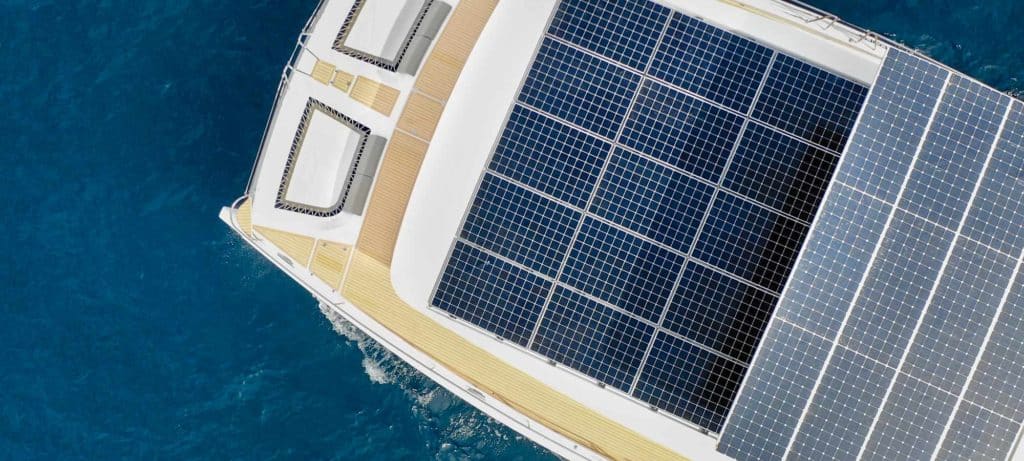
For a quiet yacht, the first Silent-Yachts 55 power catamaran has made a lot of noise. It is the world’s first mainstream yacht with a fully functioning solar installation as standard power.
And it works: When I got aboard a 55 in Spain’s Balearic Isles, it had been cruising for a month without any need for a port or marina services. My arrival was an excuse for the skipper to top off the tanks and fire up the generator for the first time in days.
The yacht comes in three versions: Cruiser (which is what I got aboard), E-Power and Hybrid. Cruiser is solar-focused. E-Power ups the capability of the e-motors as well as the batteries, while Hybrid has twin diesels and electric motors to offer 20-knot speed.
In all the power configurations, solar panels cover most of the Silent 55‘s upper surfaces. There are 32 panels in all, comprising a 527-square-foot, 10 kW array.
Beneath those solar panels is a thoroughly modern cruiser with a variable-speed 100 kW Volvo Penta D3-220 generator, a 140 kWh lithium-ion battery bank from MG Energy, Brusa chargers and inverters, and twin brushless 135 kW UQM electric motors whisking straight shafts and four-blade, fixed-pitch props. A control system integrates everything in an easy-to-use format.
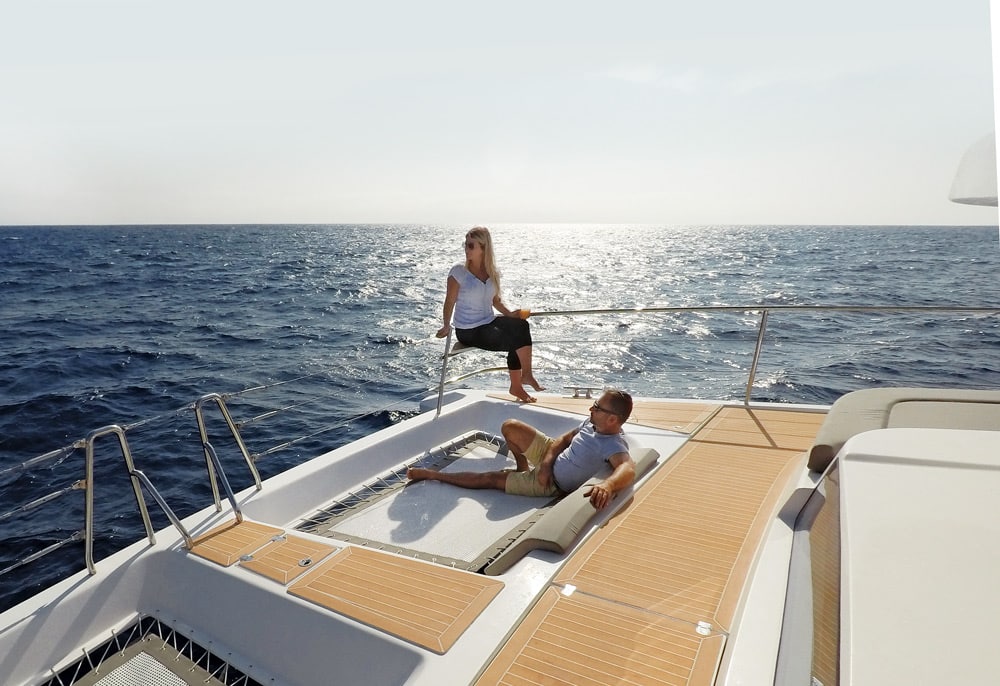
“This solar-power installation works properly because we have taken a holistic approach,” says company founder Michael Kohler, an Austrian lawyer and yachtsman with several transatlantic crossings and tens of thousands of sea miles under his belt. He developed the solar concept with Hamburg, Germany-based iYacht.
“You can’t start with a conventional design and install unconventional systems,” he says. “That would not work. Almost every aspect of this model’s specification has been considered from an energy-efficiency perspective.”
Solar-powered boats are destined to function almost exclusively in sunny-weather zones, meaning there will be high demands on air conditioning systems. So the Silent 55’s hulls are insulated, resulting in less unwanted heat entering the boat and less cold air escaping. All of the hull and superstructure glazing limits greenhouse effects with shading and angled glass, to reduce ultraviolet radiation.
Similarly, there are just two deck hatches aboard the Silent 55, whereas a conventional cat of this size may have a dozen. The conventional yacht would probably require 80,000 to 100,000 Btu of air conditioning in the Caribbean or Mediterranean, whereas the Silent 55 has a 50,000 Btu system, drawing less power.
Interestingly, the hotter the solar panels get, the less efficient they become. Ventilation has to be effective above and below the photovoltaic cells. The panels aboard the Silent 55 convert around 22 percent of the total energy received into electricity. Ten years ago, the best panels converted about 14 percent.
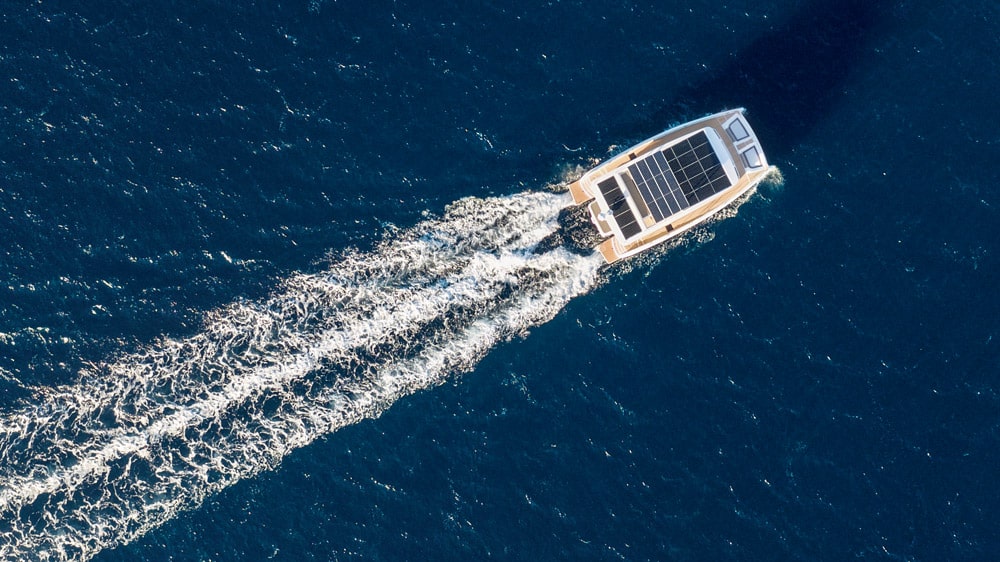
During a typical summer day in the Med, Kohler says, the Silent 55 can produce 50 to 60 kWh with 10 kW power-generation peaks. Putting that into perspective, normal energy demands would be around 10 kWh. With energy-efficient appliances and systems installed, the yacht should support four to six people’s worth of cooking, refrigeration, lighting, hot water and air conditioning.
Cruising ranges depend on load and power-generation variables. At around 5 knots, the 55 could cruise for 20 to 25 nautical miles with the A/C working. The top speed is probably around 14 knots, but for less than an hour. The Silent 55 that I got aboard in Spain had just completed a 70-nautical-mile passage between the closest bays of Mallorca and Ibiza. The passage took about 12 hours using only solar generation and stored battery power, at an average speed of 5.8 knots, Kohler said. Her diesel generator was not used at all, although on arrival, her batteries were almost empty.
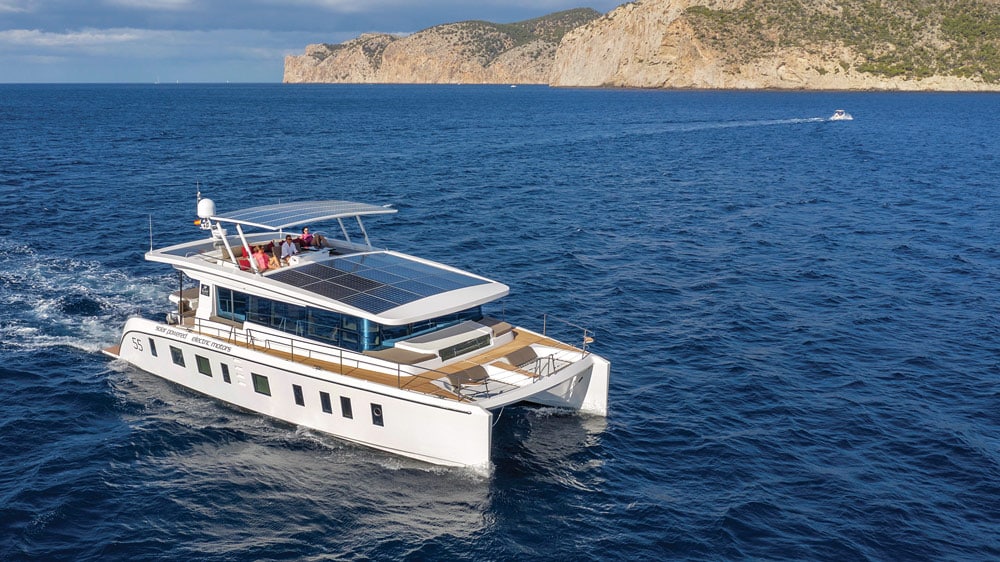
At an average 4-knot pace with the watermaker aboard, she’s virtually self-sustaining, Kohler says. She has the potential to achieve 100-nautical-mile days. With generator help at around 7 knots, she should manage 360 nautical miles before refilling her diesel tanks, which hold 159 gallons total. The generator kicks in automatically when battery levels fall below preset parameters, and switches off when a sufficient charge returns. During my test cruise between Puerto Portals and Santa Ponsa, which is about a dozen miles, the limits were set at 30 percent and 70 percent, respectively, and the generator hadn’t been run for at least three days, during which she had covered a relaxed 40 to 45 nautical miles around Mallorca’s coast. And she didn’t need to run the generator overnight with the A/C on.
Beyond her power setups and capabilities, the Silent 55’s outdoor areas deliver the usual walk-around features of a catamaran: side decks, a foredeck with trampoline loungers, and a full-beam aft deck, whose setup is open to client interpretation. The 55 that I was aboard had a dining table, double sofas and a raised a sun pad that could be replaced by an optional hydraulic tender platform.
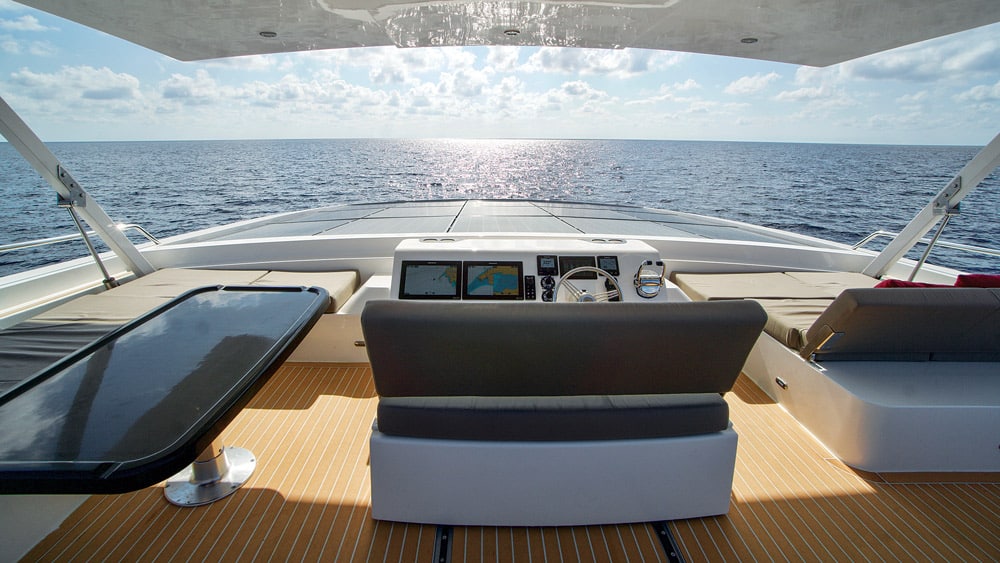
The deckhouse includes a galley aft, an amidships sofa and table to port, and a helm station to starboard. The forward owner’s stateroom is wide with well-shaded wraparound windows and portlights at varying heights. There are three other guest staterooms, all en suite with the same matte oak veneers.
The Silent-Yachts 55 creates relatively green cruising with notable range for a solar-powered craft. Though she runs quiet, her mission rings out loud and clear.
Silent 79
The next model from Silent-Yachts will be the Silent 79. While the company developed the Silent 55 and 64 models with iYacht in Germany, the Silent 79 is the work of Marco Casali in Italy and Enrique Castilla’s Inseval studio. Lamination of the first 79 is expected to commence this year.
Sails Be Gone
The first four Silent 55s, delivered in 2016, were sailboats with masts and booms towering above the solar panels. The first true power catamaran is new, and the founder of Silent-Yachts says the design improves on efficiency; the shade from sails significantly impairs the efficiency of the solar panels.
Take the next step: silent-yachts.com








